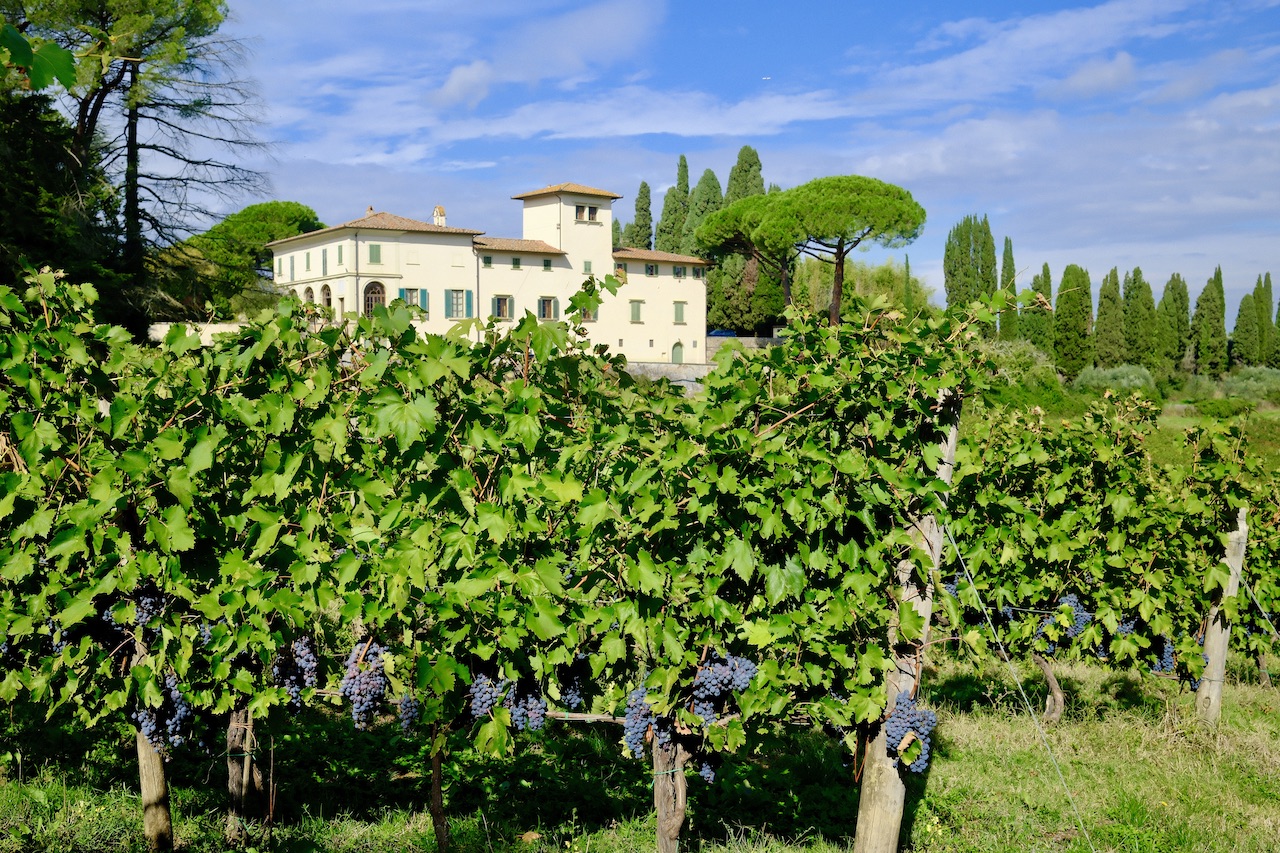Wine tours in Tuscany - About Angie - +39 3333185705 - angie.chianti@gmail.com
The wine is sacred… even for the uninitiated. Many religious rituals have wine as the protagonist, but it is sacred even for those without a religion: it shows us something important to remember and preserve: the harmonious union between the earth and man. Everything sacred is made of rituals. In the case of wine, there are not only the harvest and bottling, which are the best known, but there are many others, one of these, which is held these days on the beautiful hills of Chianti, is the bending and tying of the vine.
If you look at the vineyards, you’ll see that the rows are becoming green, vines growing and developing in long “arms”, the branches.
The young branches tend to go up, so the farmer’s job is to gently bend them and tie them to the wire and the pole who will then hold the bunches. This work is particularly delicate and difficult: it can only be done by expert hands, the vinemaker himself and other skilled people, because at this time the vines has the flower buds that later will become fruit: one wrong movement and bunch will be lost.
So, first you must bend the branch down: do this only with the most vigorous branches. The popular wisdom and science also tells us that the branch bent down loses a bit ‘of his strength that will be distributed to the weak branches, so the balance of the plant is safe! The second step concerns the tying: the young branches are rebels … and if you don’t tie them, they will return to spring up. The best way to tie them is to use willow twigs; the willow is a tree that loves to live close to rivers, and whose thin, flexible twigs provide material to tie the vine branches to the wire support. Nowadays many farmers use plastic strips, but they are a bad choice because once no longer needed they fall to the ground during the following winter pruning, and if not collected they pollute the soil. So, as usual, the older choice the better: the smallest willow twigs are very flexible and do not break when you make the knot that stops the vine branches to the wire, also, when the wines will be pruned at the end of the season, these twigs, being of organic material, will fall into the ground without creating pollution and respecting the environment. The strongest willow branches are used too, in making baskets, and even the famous “baskets” in the shape of a cone with which the farmers carried on their shoulders the harvested grapes. Now this does not happen anymore, there are lighter plastic baskets and more modern methods and less tiring, but often, in the old house, you can still find them: they are the concrete symbol of man’s labor cooperation and the earth.
If you want appreciate this important moment of the Tuscan country life, now is the right time to book your wine tasting tour, and learn how much skill, strength and finesse it takes to make the best tuscan wines!





